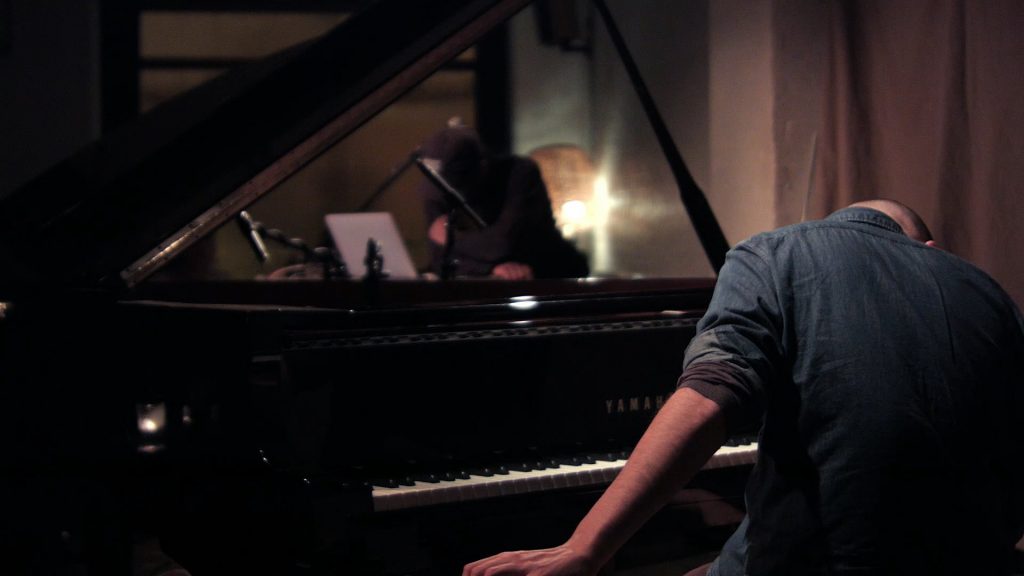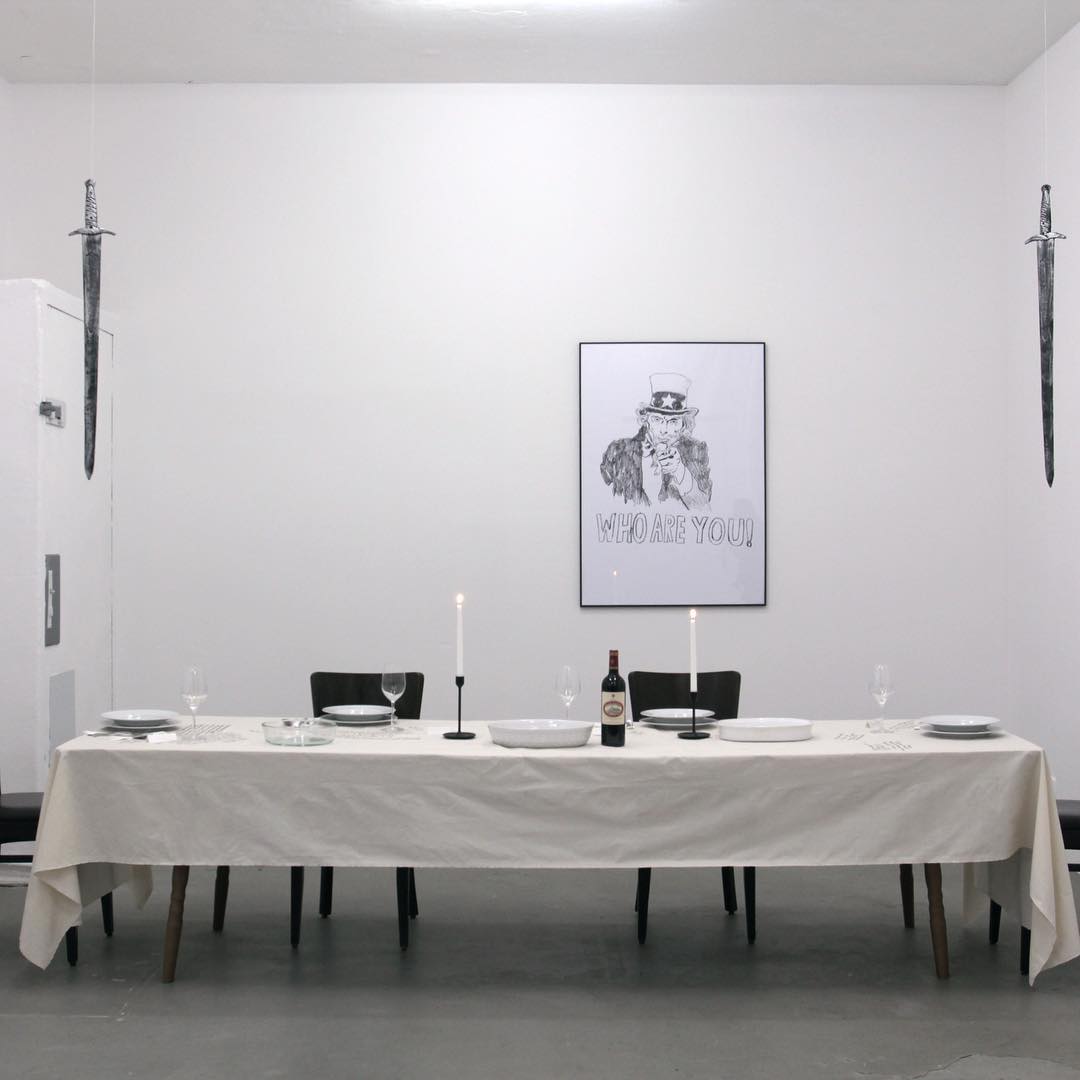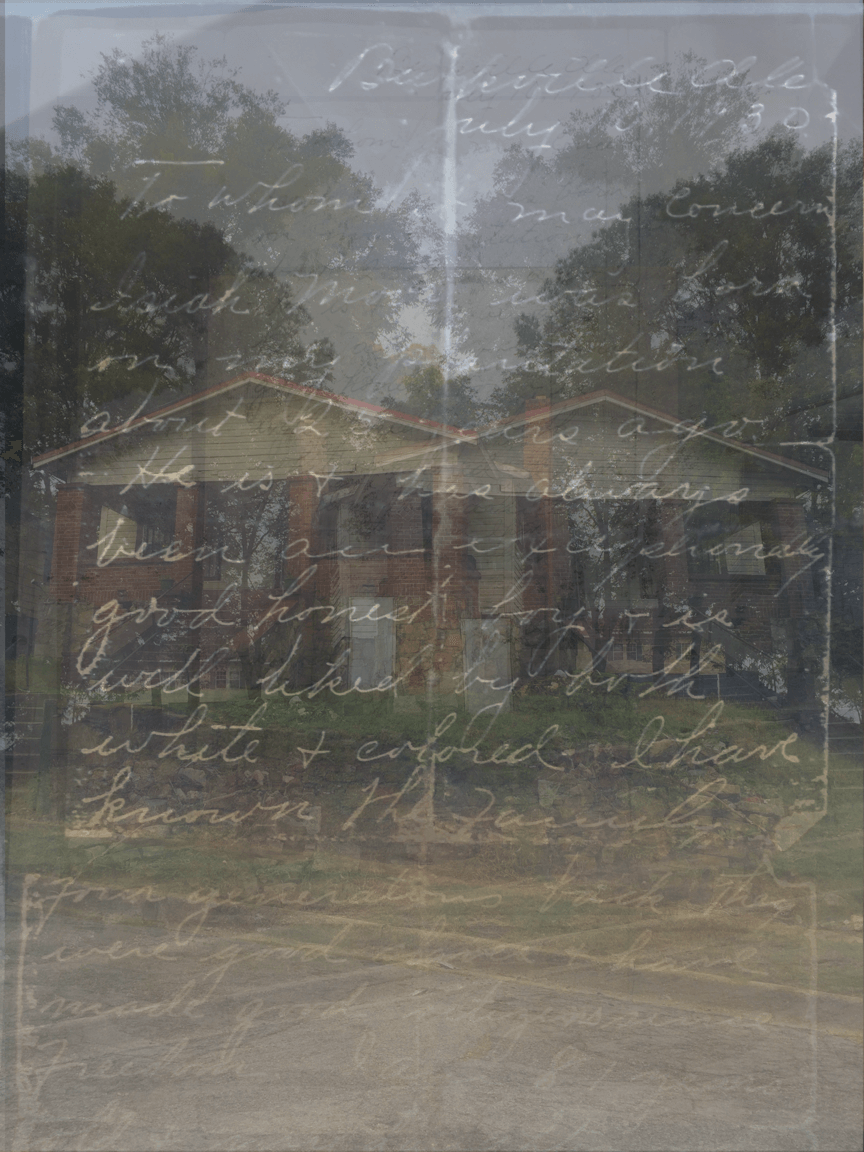Interview by Allan Gardner

DeForrest Brown is a New York-based music writer, curator and media theorist. His work blends the production of music with technology and social experience. His practice is inherently radical, utilising progressive tools in order to manifest best works relating to contemporary themes of black identity, precarity and presence in the world of contemporary art.
My first introduction to DeForrest Brown came in the form of long-form Audio work Running Quick Laps Around the Whites While Losing Chunks of Flesh and Dignity with Every Step. The almost hour-long piece comes out of a single-take improvisational manipulation of audio collected during a residency at Kunst-Werke Institute of Contemporary Art and project space Ashley Berlin with Steven Warwick. I would normally try to avoid quoting verbatim from a press release, but the one for this piece (released under Brown’s Speaker Music moniker) provides an ideal jumping-off point for the discussion of his work:
The contemporary art industry is designed for and by White people free of cultural/familial attachments or significant historical traumas, and thus the expectation of artistic output is similarly devoid of the type of aggression or emotional gravity that would come from a struggling Black artist.
This statement provides a pivotal point for the consideration of Brown’s work. This subversion of entrenched art world behavioural norms, subversion of the sardonic social elite, the transgression of boundaries and the destruction of neutral space are all present and central in works like RLATWWLCOFADWES.
DeForrest Brown makes no effort to clean up the work. He makes no effort to create palatable or neutral works – these are everything he says they are. This recording, in particular, is tense, aggressive, and collapsing audio. The sounds break and swell, with speakers struggling under the weight of the frequencies and adding layers of distortion.
When asked to write an introduction for DeForrest Brown, I was conscious of my position. I was conscious of my position as a white European artist from the UK, writing critically about work which exists as an antidote to white European emphasis in contemporary art. Brown’s work creates a consciousness of these identities and the relationship between identities as they exist in flux. In the 2017 audiovisual collaboration with Kepla entitled Absent Personae Postscript; Brown dissects what he refers to as the cyclonic disaster that is the black narrative.
This particular work utilises dissonance both in visual and audio aesthetics, with CGI/something resembling biometric scans pulsating and spinning for the duration of the piece, coupled with variations on warbling synthesis, drones and booming, detuned kickdrums. The rhythmic lead in this work comes in the form of the voice, constant and subdued. The speaker takes on the role of orator and conductor, accompanied by the discordant score.
As much as it is not my place to comment on the identity politics herein, Brown does provide prescient tools of critical analysis through this speech. Phrases like mimicking reorienting social currency in the most scarce of conditions and Every planned ovule obsolescence an ironic recycling tool, a flat space tour of the trapped conditions. There is no future outside of the trap, there is only the lash and there is only evasion spoken over discomforting electronic swells towards the end of the work, providing insight to identity and identities propagated by social others.


You are a music writer, media theorist and curator with an interest in speculative futures in performative contexts and in intersections with technology and algorithms in music. How and when the interest in all these different disciplines comes about (or crystallises)?
The basis of all of my work is ultimately musical because of my interest in rhythm and momentum, but my experiences both inside and outside of the operational practices of the music and art industry has afforded me a more macro-view of the ecosystem of distribution and categorization which in turn caused me to think and strategize my career a bit differently.
Recently I’ve started using the term “rhythmanalyst” to describe or neatly package my work and trajectory. The title was inspired by a book of essays called Rhythmanalysis by urbanist philosopher Henri Lefebvre, in which he analyzes rhythm and sensory experiences in various societal spaces and conditions. For me, my curatorial, writing and music practices work as a cohesive unit for producing speculative conjectures made from information gathered from my “rhythmanalytical” media theory and field studies.
Your most recent work, Running Quick Laps Around the Whites While Losing Chunks of Flesh and Dignity with Every Step, reflects on (citing you): “the fact that the contemporary art industry is designed for and by White people free of cultural/familial attachments or significant historical traumas, and thus the expectation of artistic output is similarly devoid of the type of aggression or emotional gravity that would come from a struggling Black artist. The wealthy, white male-ruled art scene is definitely an ingrained problem in the art world”. Could you expand more on the part about ‘the expectation of artistic output?
I suppose as a Black male; I’m immediately privy to and subsequently triggered by the emotionally muted etiquette and structure of the art world and overwhelmingly White job force. I’ve reluctantly had to focus on the Black Body for the sake of the debt that I owe to my body and my ancestral context of being the most demeaned and transformed node of White imperialist industrial colonialism.
The feelings and existential triggers associated with the material construction of my Black Body is sadly hard to ignore, especially when inhabiting prestigious White institutions as a literal luxury good meant to be traded between White people (typically male) in “positions of power.”
I try to be very aware of this dynamic and make others aware of it as I, myself, am being triggered in real-time by the nature of the stage as a semi or-historical representation of an auction block. I realize that the stage means something different for a lot of people, but I try to be factual, honest and straightforward about the ideology and perception that designs where my body is allowed to go and will eventually end up.
With Running Quick Laps Around the Whites While Losing Chunks of Flesh and Dignity with Every Step, I was attempting to stage a time and place to process all of this. It was recorded in one take for an audio upload series by a collective called XIAO MA just moments after I returned to New York from Berlin, where I had been in residence at the KW Institute of Contemporary Art and project space Ashley with Steven Warwick.
I took loads of recordings from the KW itself, the city, gallery openings, and a bar that Steve would take me to called Möbel Olfe and even layered in a sound design work from our exhibition Plaza del Dante…I used these as sonic objects that I could sift through, meditate on and recontextualize. I guess you could say it’s a sort of audio reverie of my emotional/environmental state during a James Baldwin/Adrian Piper-esque sabbatical from America and the uncomfortable social scenarios that inspired the Wages of Being Black is Death mixtape.
Part of your Substantia Nigra (one of the collaborative projects with Kepla) performances reflects ‘on memory and trauma along with ontogenetic rhythms’. I’ve read that for one of these performances, you’d trace your Faulkner-esque family history. How do you convey these performances to really different types of narratives and historico-cultural contexts (nowadays and the early 20th century)? And what challenges did you face while developing the project?
Kepla and I have been inspired by film and drama theory as well as the context of unearthed jazz recordings and live sessions. Due to a number of financial restraints, we have been largely minimal and more focused on gesture, improvisation and the potential of liminal moments. Unfortunately, we’ve only done one of the stagings together, but we confer a lot about the details and meaning of the spaces the project will be presented in.
We’ve tried to be mindful of both the narrative developed across our previous recorded material, online presences and notes are taken from these performances as a means for us to gather information and build towards an eventual joint production.
Referring back to the last question a bit here, when Kepla and I did perform together at Cafe OTO, things got a bit hysterical as I emotionally cracked on-stage. I began to rant into the mic and program percussion on iPad and laptop in rhythm with Kepla, who was brilliantly improvising on a grand piano and 404. We had filmmaker Pavel Prokopic on hand filming the performance with dry signals from the electronics being recorded directly into the mixing board, making an audio artifact that’s more cinematic in scope as opposed to a “live recording.”
I tried this again recently, alone, at Control Synthesizers and Electronic Devices for Banh mi Varg’s Pennies from Heaven performance series, taking inspiration from William Greaves’ Symbiopsychotaxiplasm: Take One and Dave Chappelle’s The Bird Revolution. Kepla churned the recording of the Cafe OTO set into a sprawling and hollow ambient piece which I performed my own electronics around while reminiscing very candidly for as long as I could emotionally take under a layered, projected image of three generations of my mom’s side of the family and my former slave great grandfather who hand-built our “home”-house in Birmingham, Alabama during the Jim Crow era.
Hopefully, the recordings and films will surface at some point in the near future as they greatly differ from the more detached or restrained approach to Absent Personae and The Wages of Being Black is Death. They definitely take Kepla and my cinematic approach to recording and producing to a new level, but also display an unhinged Black Body trapped in trauma attempting to thrash free…
Your praxis is ultimately radical, finding new ways of mixing text, storytelling, images, new media and sound. Can you imagine what other forms of ways of expressing narratives and speculative realities may also emerge as a result of new technological advancements (which are changing our perception of human communication)?
Kepla once referred to me as a “Data Thief” in reference to John Akomfrah’s docu-fiction, The Last Angel of History. I suppose there is something quite radical about a Black male from a “remote’ region of American expressing his perspective and frustrations through mediums that aren’t typically seen in conjunction with the expected identity of a Black male nor aesthetically and demographically related to the American South…, but for that reason, I’m interested in haptic experiences in life, and maybe thinking horizontally about narrative developments…how does one work through technology intuitively, emotionally.
I feel like narratives never really fully develop in the present media climate between exhaustion from the consumer and the high turnover rate of the media content itself, which leaves a lot of room for a single ecstatic moment rather than a sprawling, detailed story. I’ve always been attracted to the concepts of the “new novel” and Dogme 95 movements, and try to set up conditions within a performance or recording that feel lived in, like a world that has a narrative that you’ve yet to experience and probably never will in full.
There’s a level of empathy that has to come from the audience or listener that hopefully urges them to change or at least think about the way that they’re participating in the present moment.
Afrofuturism, the cultural, aesthetic, philosophy of science, and philosophy of history movement, which became widespread in the late 1950s and explores the developing intersection of African/African Diaspora culture with technology, has seen its presence in art, fashion, film, and design related media increased noticeably in the last few years. What’s your take on the movement and its resurfacing these days?
My collaborations with Kepla and the Make Techno Black Again campaign have been ways for me to explore the present condition of Afrofuturism, and obviously, my conjectures have a lot in common with the Black Audio Film Collective. I apply a lot of pessimism to what I understand to be an Afrocentric future, ensuring that the dire nature of a material Black reality is fully felt and accounted for. I try to consider this and update tactfully.
It makes a lot of sense to me that Afrofuturism would have a resurgence right about now. I feel like the wild ride of assimilating into America for Black people has reached a fever point…I’m not quite sure that racial cohabitation is going as well as White people would feel comfortable admitting. I really consider thinkers who are locating and defining Whiteness, like Ryan Kuo and Robin DiAngelo, in relation to the rational investigations of Blackness by Paul Gilroy and Hannah Black in hopes of formalizing the present situation of a collective Black Body with a realistic future envisioned.
As a media theorist, where would you like to take your research into?
Lately, I’ve been concerning myself more with praxis and exploring how the research and experiential information that I’ve gathered over the years can be materialized in works that can bring me financial/emotional stability. Collaborating with Steven Warwick on our Elevator to Mezzanine exhibitions has been really enlightening in expanding how I think about objects in a space, and the semiotic value and assembled meanings across and along them.
When we were in Berlin together, we developed the play Performing America (Iconic America) with an accompanying gallery show called Plaza del Dante. These projects for me run parallel to what I do with Kepla in that Steve, and I really mulled over the history and moral/religious architecture of the American ethos. We considered “cancellation” and the culture of violence laced throughout socio-historical interactions in America, taking a very “psychoanalyst on the couch” approach.
Conceptualising objects and scenarios like the dinner table with swords hanging above the chairs with the image of Uncle Sam asking the viewer, “Who are you?” really helped me understand and cope with my feelings about America’s history and where my Black Body is habitually positioned within it.
What is your chief enemy of creativity?
Nothing. I refuse to be deterred from creating and sculpting communicative affect. I suppose I’m often slowed down by the wondering and misguided thoughts and interests of individual funding bodies and institutions who lack intuition and vision. I’m not a careerist working his way through the artworld for the sake of fame.
I have a very specific goal and agenda of dismantling the established canon and disrupting the flaccid pageantry that White organisers and spectators lust after. I’ve always found the dominant White male perspective of art and aesthetics to be bafflingly short-sighted and completely unusable by any person outside of the distinctive characterizations of what can and should be said and done.
Mastery, perfection and the critical power dynamics that are sorted through the artist/audience relationship are useless to me. I am not interested in distilling my skills and experiential surroundings down to a potent piece of consumable content for thirsty, unempathetic (typically White) patrons, but trying to explode the present moment with a dense nonlinear history full of emotion and affect.
You couldn’t live without…
I’ve lived without a lot and have diligently carried on. In the statement for Running Quick Laps Around the Whites While Losing Chunks of Flesh and Dignity with Every Step, I asked: “How long can a Black artist dabble in the rat race of the art world before complete collapse?” This was a real and very serious question as my quality of life and emotional capacity have been put to the test time and time again by cold and historically dismissive White people and their fantasy game of cultural valuation and exchange.






